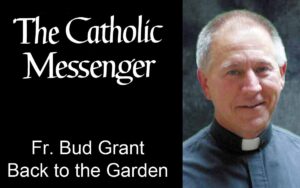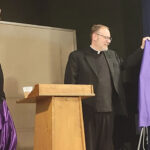
Last August the sainthood cause of Black Elk (Heȟáka Sápa) was accepted by the Vatican. This is both wonderful and tendentious. Black Elk (1883?-1950) was a “catechist,” who, in lieu of a priest, could lead prayer services and even baptize. He was also a traditional wičháša wakȟáŋ (holy man) and great visionary. His great-granddaughter, Charlotte “doesn’t really believe that great-grandfather was ever a Catholic” (New Yorker, Ian Frazier, 12.17.17). Certainly, Black Elk repudiated the Lakota spirituality described in John Neihardt’s mystical classic “Black Elk Speaks” (“Black Elk’s Religion, “Clyde Holler, 207ff). But he may have been coerced by Father Placidus Sialm, who had a noted animus toward all things “pagan.” (“Black Elk: Life of an American Visionary,” Joe Jackson). Either he disavowed his tradition or infused Catholicism with it.
Will Black Elk be a saint because he was a wičháša wakȟáŋ or despite it? His canonization would be crass cultural appropriation if the church is attempting to “own” Black Elk, purging him of any residual
Lakota traditionalism. On the other hand, by elevating him as a Native Holy Man, the church affirms the rich spirituality of the Lakota people.
The Congregation for the Causes of Saints will determine whether and how Heȟáka Sápa is recognized. Pope Pius XI envisioned an indigenous clergy “which would correspond better with the genius and character of the natives and which would be in keeping with the needs and the spirit of the different countries” (Rerum Ecclesiae 27). Vatican II affirmed that “The Catholic Church rejects nothing that is true and holy in these religions. She regards with sincere reverence those ways of conduct and of life, those precepts and teachings which, though differing in many aspects from the ones she holds and sets forth, nonetheless often reflect a ray of that Truth which enlightens all men” (Nostra Aetate, 2). In that light, and because it is a-doctrinal, Lakota spirituality is not contrary to Catholicism.
More importantly, it is beautiful. On Black Elk’s reservation many Jesuits enthusiastically embraced Lakota traditions. The quintessential virtue of “generosity” stood out to Father Charles Weisenhorn. Father C.P. Jordan (a Lakota) knew that “there could be … a thread of divinity working within the [non-Christian] Indian.” Father Eugene Buchel melded Lakota rituals with Catholic rites (“The Jesuit Mission to the Lakota Sioux,” Ross Enochs, 128ff). Natives and non-natives still embrace the sweat lodge and sacred pipe, for example, as powerful sacramental aids towards deepening all relationships — with other races, the deceased and the rest of creation.
The pipe ceremony concludes with the amen-like “Mitakuye Oyasin”… All My Relations. In “The Sacred Pipe” (15) Black Elk records this prayer: “My relatives, Grandmother and Mother Earth, we are of Earth and we belong to You. O Mother Earth from whom we receive our food, You care for our growth … each step upon You should be done in a sacred way. Each step should be a prayer…”
Black Elk’s sprawling and intoxicating vision encompasses all of creation. “While I was there [at the center of the Earth] I saw more than I can tell and I understood more than I saw; for I was seeing in a sacred manner the shapes of all the things in the spirit, and the shape of all shapes as they must live together like one being. And I saw that the sacred hoop of my people was one of many hoops that made one circle, wide as daylight and starlight, and in the center grew one mighty flowering tree to shelter all the children of one mother and one father. And I saw that it was holy” (“The Sixth Grandfather,” Raymond DeMallie, p. 97).
A friend of mine who spent years ministering at Red Cloud Indian School puts it succinctly: “if Black Elk is a saint, he is a Lakota saint.” Mitakuye Oyasin.
(Father Bud Grant is a professor of theology at St. Ambrose University in Davenport.)











